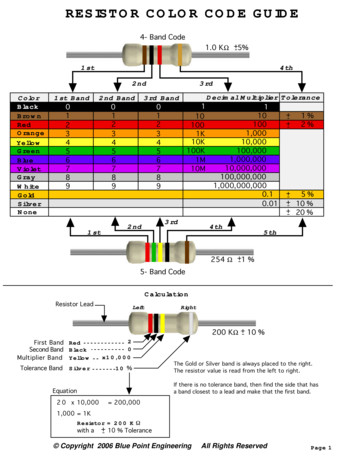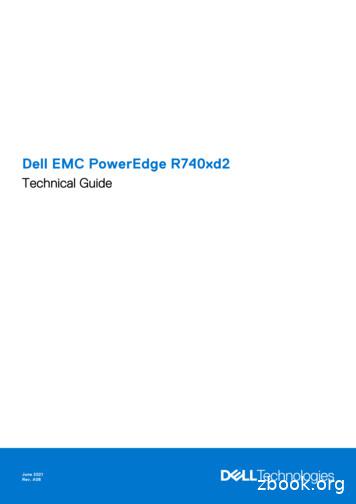Gold Distribution In Surface Sediments On The Continental .
GEOLOGICAL SURVEY CIRCULAR 587Gold Distribution inSurface Sediments onthe Continental Shelfoff Southern Oregon:A Preliminary Report
Gold Distribution inSurface Sediments onthe Continental Shelfoff Southern Oregon:A Preliminary ReportBy H. Edward CliftonG E0 L0 G I C A LS U RV EYWashington 1968C I R C U L A R 587
United States Department of the InteriorSTEWART L. UDALL, SecretaryGeological SurveyWilliam T. Pecora, Director,,.(rFreeonapplication to the U.S. Geological Survey, Washington, D.C. 20242
--------------------------------Gold distribution ------------1114Origin and potential economic significance of thegold anomalies ------------------ConclusionsReferences cited555ILLUSTRATIONPageFIGURE1.2Locations of surface grab samples that have been analyzed for goldiii
GOLD DISTRIBUTION IN SURFACE SEDIMENTS ON THE CONTINENTAL SHELFOFF SOUTHERN OREGON: A PRELIMINARY REPORTBy H.EDWARD CUIFTON(1968) described and interpreted the distribution of heavy minerals and associated magnetic anomalies on the shelf. The presentreport describes the distribution of gold insurface sediment on the continental shelf andits relation to the associated black sands.Many persons have contributed to thisstudy. R. L. Phillips has assisted throughoutthe project. The following individuals participated in sample preparation: F. J. Swanson,D. A. D'Armond, John Harding, J. M. Kelly,R. R. Payne and V. G. Wood. Most analyseswere made by Arthur Hubert.AbstractLocal concentrations of gold have been identified insurface sediments on the continental shelf off southernOregon between Cape Arago and Cape Sebastian, adistance of about 40 miles. Concentrations of gold rangefrom the lower limit of detection, 5 parts per billion,to almost 150 parts per billion. The largest goldanomaly is an area of 1'5 to 20 square miles off CapeBlanco. Gold is associated with black sands believedto be relict beach placers formed during a previous lowstand of the sea. Although the gold content is low, itmay indicate higher grade material at depth; drillingwill be necessary to determine the economic potential ofthe placers.INTRODUCTIONMETHODSThe Heavy Metals program of the U.S.Geological Survey was initiated in 1966 tostimulate domestic production of a small groupof critical metals (U.S. Geological Survey,1968). As part of this program, study of theblack sands of southern Oregon was begun, thegoal being to establish the economic potential,particularly as regards gold and platinum, forblack sands on the continental shelf. To implement this study, a joint research contractwas entered into with the Department ofOceanography, Oregon State University, forexamination of the continental shelf. Concurrent with this examination, a study of theblack sands in emergent terrace and modernbeach deposits has been carried on by personnel of the Geological Survey, as well as astudy of the sources for potential heavy metalsdeposits under a joint research contract withthe University of Oregon.Although this investigation is not yet complete, several preliminary conclusions can bedrawn concerning the heavy metals potentialof the southern Oregon continental shelf.Kulm, Heinrichs, Buehrig, and ChambersTo date 120 surface-sediment samples collected from the continental shelf (fig. 1) havebeen analyzed for gold. Seventy-eight of thesesamples were collected by ,t he U.S. GeologicalSurvey RV Polaris (under the direction ofG. A. Rusnak) during the first year of thestudy; knowledge of the gold and heavy mineral content of these samples was ill'strumentalin planning subsequent sampling on the, shelf.The remaining samples were collected by Oregon State University personnel as described byKulm, Heinrichs, Buehrig, and Chambers(1968). Analysis for gold in other samples,including many from areas previously unsampled, will soon be completed. It is anticipated,however, that these analyses will not significantly change the conclusions drawn in thisreport.In order to achieve accurate reproducibleanalytical data, all the samples were concentrated prior to analysis, according to the procedures outlined by Clifton, Hubert, and Phillips (1967). Gold content was determined by1
43 -------- r--- ----- ------- ---- ---r-- EXPLANATIONoo'---100------75---Contours, showing gold valuesin parts per billion--50---40-Contours, showing depth in fat'homsAfter J . V. By rne Sample locationU.S. Geological Survey RV Polaris ,cruise Sept. 1966 - - ASample locationRV Yaquina, cruise 6707 July 1967Stippling shows areaswithin which samples contain at least 5ppb gold20FIGURE1.-Locations of surface grab samples that have been analyzed for gold. Northern area.2
NAUTICAL0II05KILOMETERSMTN.42 -- --- -- -- -- - - 201FIGURE1.-Locations of surface grab samples that have been analyzed for gold. Southern area.3
research 1965: U.S. Geol. Survey Prof. Paper 525-C,p. C168-C171.Pard - J T L()34 .Be.ach nlace l:s of the Ore ron CQast:U.S. Geological Survey, 1968, U.S. Geological Surveyheavy metals program progress report, 1966 and19 6 7 U.S . Geol. EyrveCirc. 5Q Q , 24 p,
iii Page 5 5 5 Page 2 . GOLD DISTRIBUTION IN SURFACE SEDIMENTS ON THE CONTINENTAL SHELF . particularly as regards gold and platinum, for black sands on the continental shelf. To im . Sur
.56 ohm R56 Green Blue Silver.68 ohm R68 Blue Gray Silver.82 ohm R82 Gray Red Silver 1.0 ohm 1R0 Brown Black Gold 1.1 ohm 1R1 Brown Brown Gold 1.5 ohm 1R5 Brown Green Gold 1.8 ohm 1R8 Gray Gold 2.2 ohm 2R2 Red Red Gold 2.7 ohm 2R7 Red Purple Gold 3.3 ohm 3R3 Orange Orange Gold 3.9 ohm 3R9 Orange White Gold 4.7 ohm 4R7 Yellow Purple Gold 5.6 ohm 5R6 Green Blue Gold 6.8 ohm 6R8 Blue Gray Gold 8 .
Gold 6230 2.1 20 27.5 10.4 Y 125 Gold 6226 2.7 12 19.25 10.4 Y 125 Gold 6152 2.1 22 30 10.4 Y 140 Gold 6140 2.3 18 25 10.4 Y 140 Gold 6130 2.1 16 22 10.4 Y 125 Gold 5220 2.2 18 24.75 10.4 Y 125 Gold 5218R 2.1 20 27.5 10.4 Y 125 Gold 5218 2.3 16 22 10.4 Y 105 Gold 5217 3 8 11 10.4 Y 115 Gold 5215 2.5 10 13.75 10.4 Y 85 Gold 5120 2.2 14 19 10.4 Y .
Distribution of Sediments The sediment of continental shelves is called neritic sediment, and contains mostly terrigenous material. Sediments of the slope, rise, and deep-ocean floors are pelagic sediments
Distribution of Sediments The sediment of continental shelves is called neritic ( Òof the coastÓ) sediment, and contains mostly terrigenous material. Sediments of the slope, rise, and deep-ocean ßoors are pelagic ( Òof the deep seaÓ) sediments, and contain a greater proportion of bi
in relation to the history of the earth. Varves Glacial streams carry sediments, eroded by glaciers, to glacial lakes. In summer, thick layers of coarse-grained sediments are deposited, while in winter, thinner layers of fine-grained sediments are deposited. Year after year the sediments accumulate in this way.
Shoreline and Shelf Sediments 1) Shallow marine sediments that deposit along shorelines and offshore shelf are termed neritic 2) Coast and shelf sediments are of two types: LandLand--derived inorganic rock and mineral derived inorganic rock and mineral fragments of gravel, sand, silt, and c
Gold Content 24 Karat pure gold (a color that cannot be duplicated) 18 Karat or marked 750 75 percent gold 14 Karat or marked 585 58.5 percent gold 12 Karat or market 500 50 percent gold Unless you have coinage or a wafer or bar of gold, the dealer usually cheats a little on gold content. Many jewelry pieces are gold plated;
American Revolution has fallen into the condition that overtakes so many of the great . 4 events of the past; it is, as Professor Trevor-Roper has written in another connection, taken for granted: "By our explanations, interpretations, assumptions we gradually make it seem automatic, natural, inevitable; we remove from it the sense of wonder, the unpredictability, and therefore the freshness .























